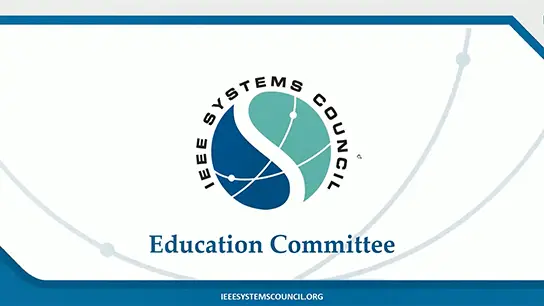Industry 4.0-compliant Digitalization Engineering of Systems-of-Industrial Cyber-Physical Systems. Knowledge Background (video)
Armando Walter Colombo
-
Members: FreeSYSC
IEEE Members: Free
Non-members: FreeLength: 0:54:34
Webinar
27 Nov 2024
We are witnessing rapid changes in the industrial environment, mainly driven by business and societal needs towards production customization and the digitalization of the economy, i.e., digitalization and interconnection of products, services, enterprises, and people. This trend is supported by new disruptive advances in the cross-fertilization of concepts and the amalgamation of information-, communication-, control- and mechatronics technology-driven approaches in traditional industrial systems. In this context, industrial informatics combine the progress achieved by the application of large distributed and networked computing systems on product and production system design, planning, engineering, and operation with the power of digital data that are produced by industrial processes, collected by the Internet of Things, processed by Human/(Natural-) and Human-created (Artificial-) Intelligence (AI).
Cyber-Physical Systems (CPS) involve a high degree of complexity at numerous spatial and temporal scales, and highly networked communications integrating their computational and physical components. As such CPS refer to Information-Communication-Control-Automation-Mechatronics-Systems (sensing, actuating, computing, communicating, executing, deciding, etc.) embedded in physical objects, interconnected through several networks including the Internet, and providing citizens and businesses with a wide range of innovative applications, including “AI-supported automation engineering” based on knowledge contained in digitalized data, information, services.
Ontologically the term Cyber-Physical Systems means hardware-software systems which tightly couple the physical world and the digitalized (virtual) world. In a CPS ecosystem, on the one hand every real physical object has one or more cyber representations, and on the other hand a cyber component or system can be linked to a physical representation i.e., an object in the 3-dimensional human-tangible world. Moreover, these objects are increasingly interconnected in real-operational-time, networked either permanently or communicate in an asynchronous manner from time to time, making the whole infrastructure evolvable and influencing the creation of emergent behaviors, possessing all essential characteristics of real-time-critical systems-of-systems.
Current implemented Industry 4.0-compliant digitalized systems-of-systems built their structure and their functions based on CPS. They forge the core of real-world networked industrial infrastructures having a cyber-representation through digitalization of data and information across the enterprise, along the product and process engineering life cycle and from suppliers to customers along the supply chain following the value-stream. As such the Prof. Dr.-Ing. competitive performance of a System-of-ICPS mainly depends on the ability to effectively collect, analyze and use large-scale digitalized data and information, in real-time, from many different and often heterogeneous sources, to sustainably and efficiently manage, supervise and operate in the industrial environments. This effective information- and knowledge-driven interaction of ICPS with other CPS and enterprise systems, extending to all business processes, is viewed as vital to modern industries, supporting the real implementation of e.g. a Circular Economy.
In this context, the DL (i) addresses the penetration and proliferation of Industry 4.0-compliant solutions into the industrial environments under the perspective of a Circular Economy framework, taking into account that the same trend is also evident in other domains such as energy, healthcare, manufacturing, military, transportation, consumer, enterprise, robotics, and smart cities, among others; and (ii) offers an overview of major requirements for supporting the Engineering of Industry 4.0-based digitalization of processes and of the Systems-of-Cyber-Physical-Systems behind, showing examples of ongoing innovation


